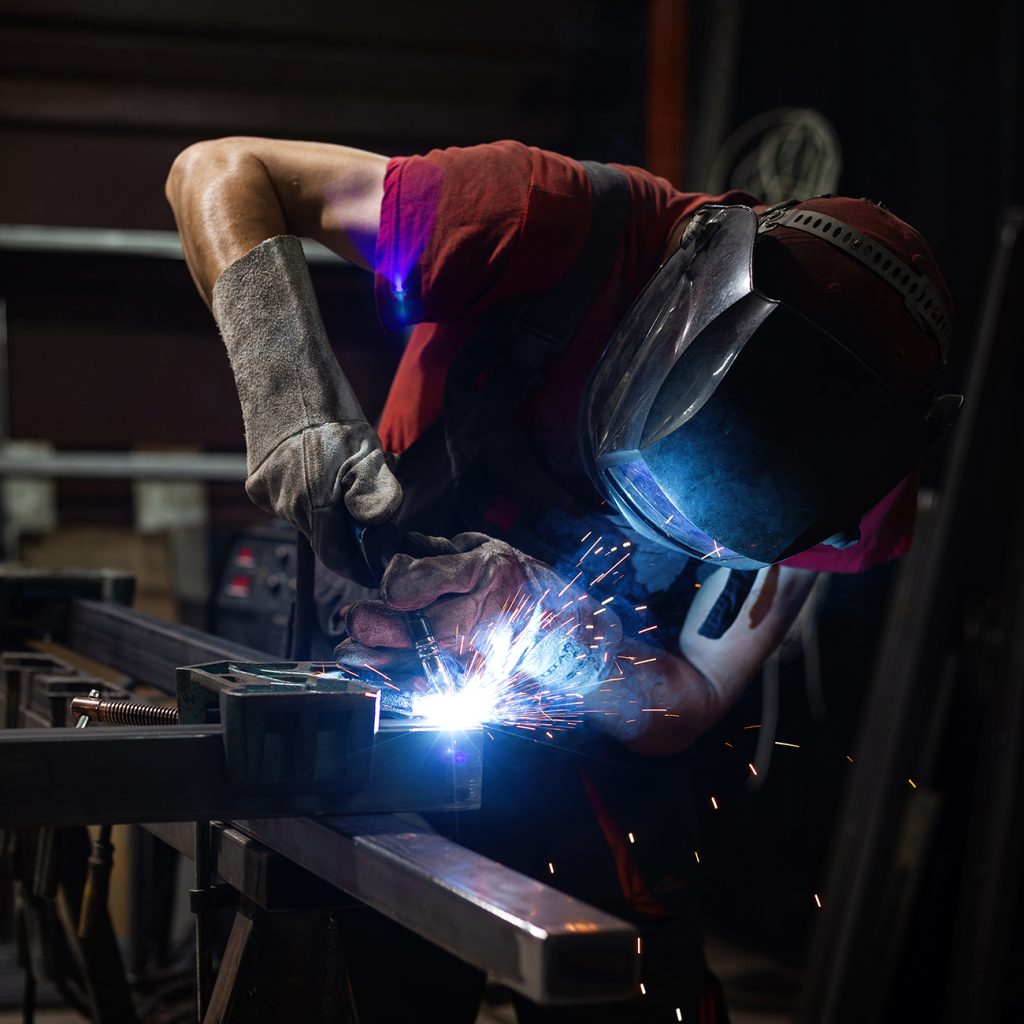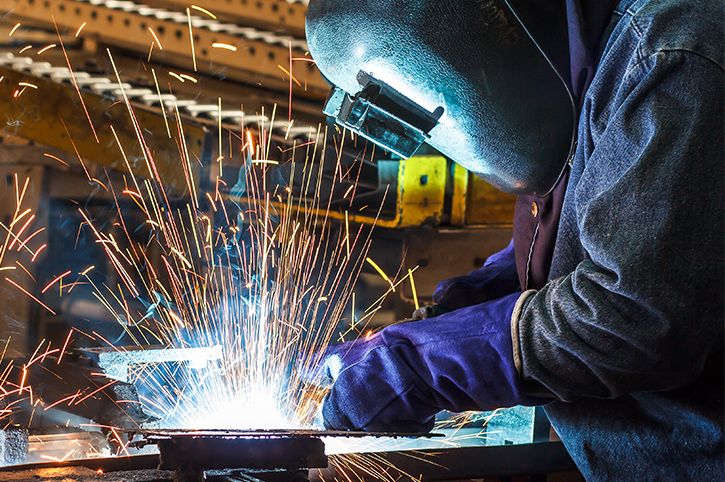Common Welding Repair Issues and Exactly How to Address Them Successfully
Welding repair work typically experience a series of concerns that can jeopardize the stability of the end product. Typical issues consist of insufficient infiltration, porosity, and misalignment, among others. Each flaw offers distinct difficulties that require specific strategies for resolution. Recognizing these issues is important for welders intending to boost their results and abilities. This conversation will discover these usual welding repair work concerns and reliable methods to address them.
Insufficient Infiltration
Insufficient penetration occurs when the weld metal stops working to completely fuse with the base product, causing weak joints and possible architectural failings. This issue often comes from not enough warmth input, inaccurate electrode angle, or improper welding speed. Welders may experience insufficient penetration due to a miscalculation of the required criteria for a details product thickness or type. Furthermore, contamination on the base product's surface can impede efficient bonding, worsening the trouble. To resolve poor infiltration, welders need to guarantee appropriate setups on their tools and keep a tidy work surface area. Routine assessment of welds is recommended to identify any kind of shortages early, enabling timely improvements and the avoidance of jeopardized structural stability in welded settings up.
Porosity
Porosity is an usual problem in welded joints that shows up as small gas bubbles trapped within the weld steel. This problem can jeopardize the stability of the weld, leading to reduced strength and possible failure under tension. Montana Mobile Welding and Repair Fabrication. Porosity normally arises from contamination, moisture, or improper welding methods, which permit gases to leave into the liquified weld pool. To deal with porosity, welders must ensure appropriate surface area preparation, preserve a tidy workplace, and make use of suitable welding parameters. Additionally, picking the best filler material and securing gas can reduce gas entrapment. Normal examination and testing of welds can aid determine porosity early, ensuring prompt rehabilitative activities are taken, thereby protecting the quality and reliability of the welded structure
Misalignment
Imbalance in welding can occur from numerous aspects, including inappropriate configuration and thermal development. Understanding the origin triggers is crucial for effective resolution. A number of adjustment methods are readily available to straighten parts and assure architectural stability.
Root causes of Misalignment
Welding imbalance often originates from a selection of underlying issues that can jeopardize structural honesty. One primary cause is improper fit-up of parts prior to welding, which can lead to gaps and unequal surfaces. Variants in thermal expansion throughout the welding process can likewise lead to distortion, specifically if the products being joined have various coefficients of growth. Furthermore, inadequate fixturing and clamping may stop working to hold elements securely in location, causing motion throughout welding. Inadequately conserved tools, consisting of welding devices and devices, might introduce inconsistencies in the weld grain, further adding to misalignment. Driver error, stemming from insufficient training or experience, can additionally play a significant function in creating misaligned welds.

Improvement Methods Readily Available
Attending to imbalance effectively needs a mix of rehabilitative methods customized to the specific concerns handy. One usual technique is making use of jigs or fixtures to hold parts in the proper position during welding, making certain constant placement. Furthermore, preheating the products can aid decrease distortion and boost fit-up. For significant imbalance, mechanical adjustment techniques, such as utilizing hydraulic jacks or clamps, can be utilized to correct the position prior to welding. Post-weld heat treatment may additionally be necessary to eliminate tensions caused by misalignment. Finally, mindful assessment and change throughout the configuration phase can stop misalignment concerns from coming to be significant issues, promoting a smoother welding procedure and enhancing overall structural integrity.
Distortion
Distortion is an usual difficulty in welding that can occur from various factors, consisting of irregular cooling and heating. Comprehending the reasons for distortion is crucial for applying efficient avoidance strategies. Addressing this problem not just enhances structural honesty yet also boosts the overall high quality of the weld.
Reasons for Distortion
When based on the extreme warmth of welding, materials often go through changes that can result in distortion. This phenomenon mainly develops from thermal growth and tightening during the welding process. As the weld location heats up, the product broadens; upon air conditioning, it gets, which can create inner anxieties. Additionally, irregular heating throughout a work surface can aggravate these stress and anxieties, leading to warping or flexing. The kind of product additionally plays a considerable duty; steels with differing thermal conductivity and coefficients of growth may react in different ways, causing unforeseeable distortions. Bad joint layout and insufficient fixturing can add to misalignment during welding, raising the chance of distortion. Understanding these reasons is crucial for effective welding fixing and prevention techniques.
Prevention Techniques
Effective avoidance strategies for distortion during welding concentrate on controlling warmth input and guaranteeing correct joint style. Preserving a consistent warmth input aids to lessen thermal development and tightening, which can lead to distortion. Utilizing techniques such as pre-heating the work surface can additionally lower the temperature level gradient, advertising uniform heating. Furthermore, picking ideal joint styles, such as T-joints or lap joints, can enhance security and reduce anxiety concentrations. Applying correct fixturing to safeguard the workpieces in position even more aids in maintaining placement during the welding procedure. Lastly, staggered welding sequences can distribute warmth extra evenly, protecting against local distortion. By applying these strategies, welders can considerably lower the probability of distortion and enhance the general high quality of their welds.
Splitting
Cracking is a typical issue run into in welding fixings, typically arising from different variables such as incorrect cooling prices, product option, or poor joint preparation. The event of fractures can significantly compromise the honesty of the weld, bring about potential failures during operation. To resolve this problem, welders need to initially assess the origin causes, guaranteeing that materials work and appropriately selected for the details application. Additionally, controlling the cooling rate during the welding procedure is essential; quick cooling can cause stress and result in cracking. Appropriate joint layout and prep work also add to reducing the danger. Executing these strategies can enhance weld top quality and sturdiness, eventually reducing the likelihood of breaking in completed weldments.

Insufficient Blend
A substantial issue in welding repair services is insufficient combination, which takes place when the weld steel does not sufficiently bond with the base product or previous weld passes - Belgrade Welding. This problem can cause weak points in the joint, possibly jeopardizing the integrity of the bonded framework. Aspects adding to incomplete fusion include insufficient heat input, incorrect welding technique, and contamination of the surface areas being joined. To resolve this problem successfully, welders must guarantee correct pre-weld cleaning and surface preparation, in addition to readjust their welding criteria to accomplish appropriate infiltration and blend. Regular examination throughout the welding process can also aid identify insufficient blend early, enabling for timely rehabilitative actions to boost the overall high quality of the weld
Overheating
While welding fixings can enhance architectural integrity, overheating provides a considerable obstacle that can result in product degradation. Too much heat throughout welding can modify the mechanical homes of steels, causing lowered stamina, raised brittleness, and warping. This sensation is specifically vital in high-stress applications where architectural dependability is extremely important. Recognizing overheating can entail visual evaluations for staining or distortion, as well as checking temperature during the welding procedure. To alleviate the threats related to getting too hot, welders ought to employ ideal methods, such as regulating heat input, adjusting travel rate, and utilizing appropriate filler products. Additionally, executing pre- and post-weld warm treatments can help recover product residential or commercial properties and improve the general quality of the repair, guaranteeing long-term performance and security.
Regularly Asked Concerns
What Are the Common Indications of a Welding Defect?

How Can I Examine My Welds for Top quality?
To examine welds for high quality, one can make use of aesthetic evaluations, ultrasonic screening, and radiographic approaches. Each technique ensures architectural stability, determines flaws, and validates adherence to specified criteria, ultimately more info improving the reliability of the bonded joints.
What Safety and security Precautions Should I Take While Welding?
When welding, one ought to prioritize safety and security by putting on suitable personal protective devices, guaranteeing appropriate ventilation, securing combustible products away, maintaining a clean work area, and understanding environments to protect against injuries and mishaps.
Can I Repair a Weld Without Redoing the Entire Joint?
Repairing a weld without redoing the whole joint is feasible, depending upon the damage (Montana Mobile Welding and Repair Belgrade Fabrication). Methods such as grinding, adding filler product, or utilizing a welding procedure can properly address certain imperfections while protecting the surrounding structure
What Devices Are Essential for Efficient Welding Fixes?
Vital devices for efficient welding repair services consist of a welding device, wire brush, grinder, safety gear, clamps, and filler products. Each device plays an important duty in guaranteeing high quality and safety throughout the repair work procedure. Porosity commonly occurs from contamination, dampness, or incorrect welding strategies, which permit gases to leave right into the liquified weld pool. Improperly kept equipment, consisting of welding devices and tools, may present disparities in the weld bead, additional adding to imbalance. When subjected to the intense warmth of welding, products often undergo adjustments that can lead to distortion. Splitting is an usual issue experienced in welding repair services, often resulting from numerous aspects such as improper air conditioning prices, material choice, or inadequate joint prep work. A substantial issue in welding repair services is insufficient blend, which occurs when the weld metal does not sufficiently bond with the base material or previous weld passes.